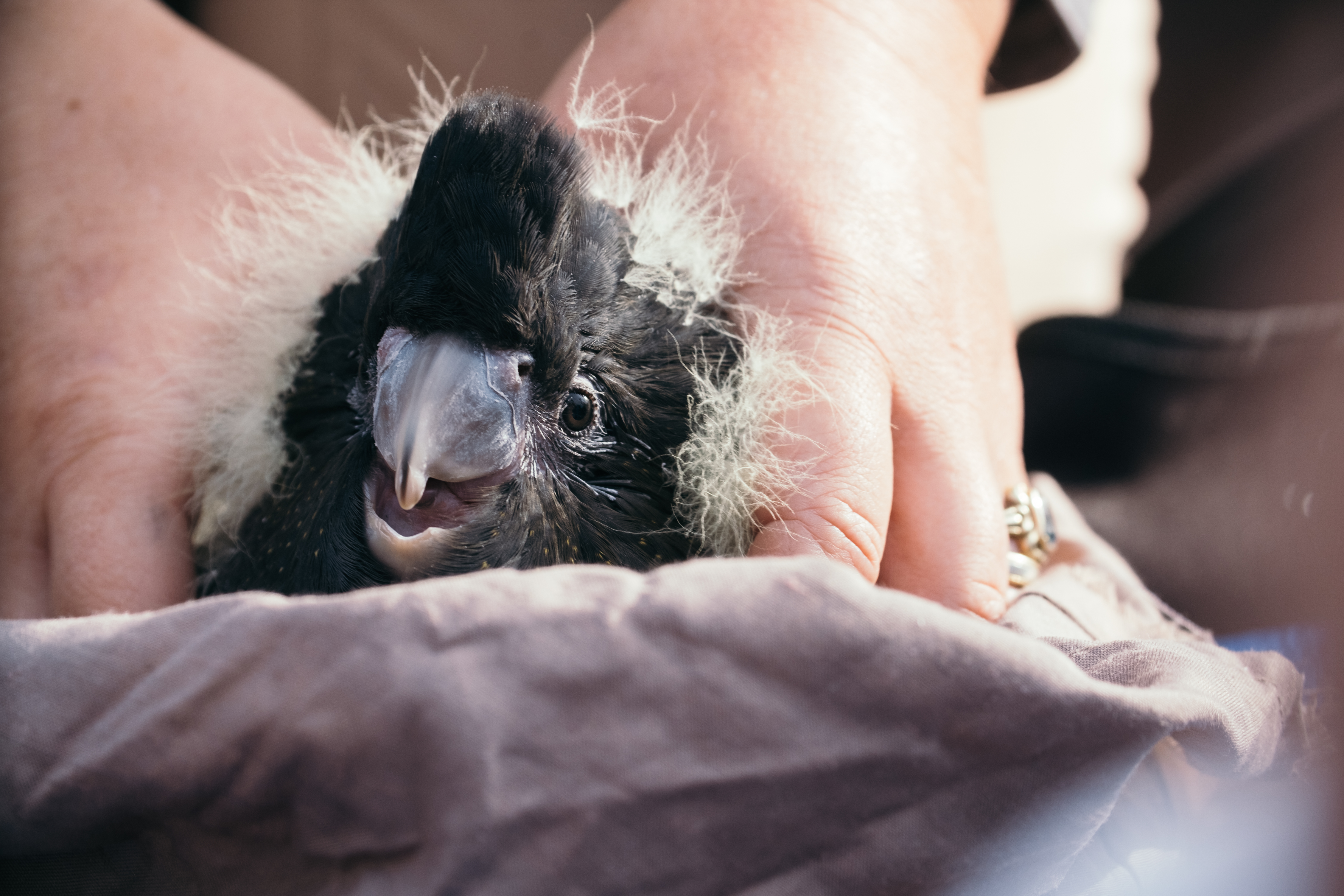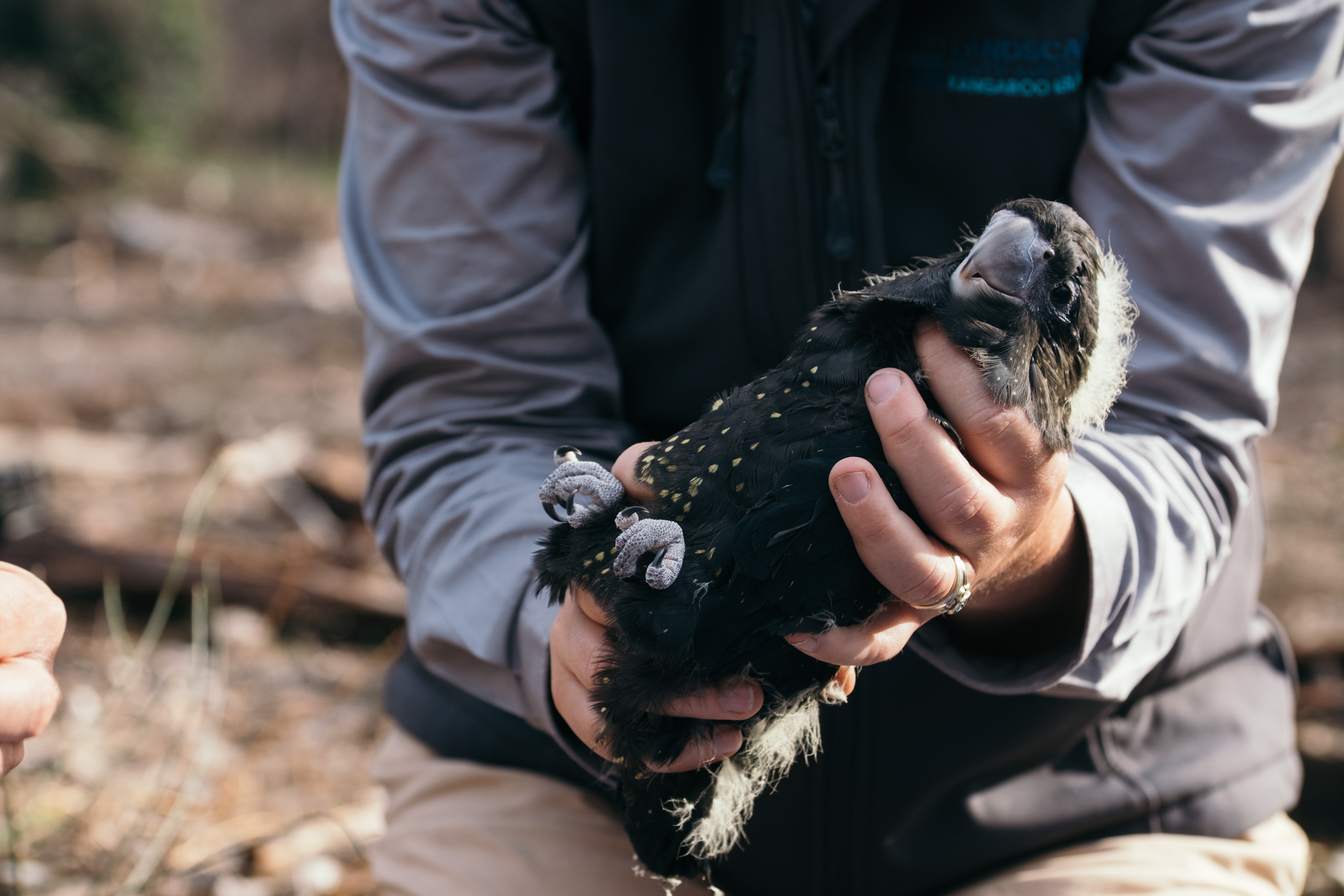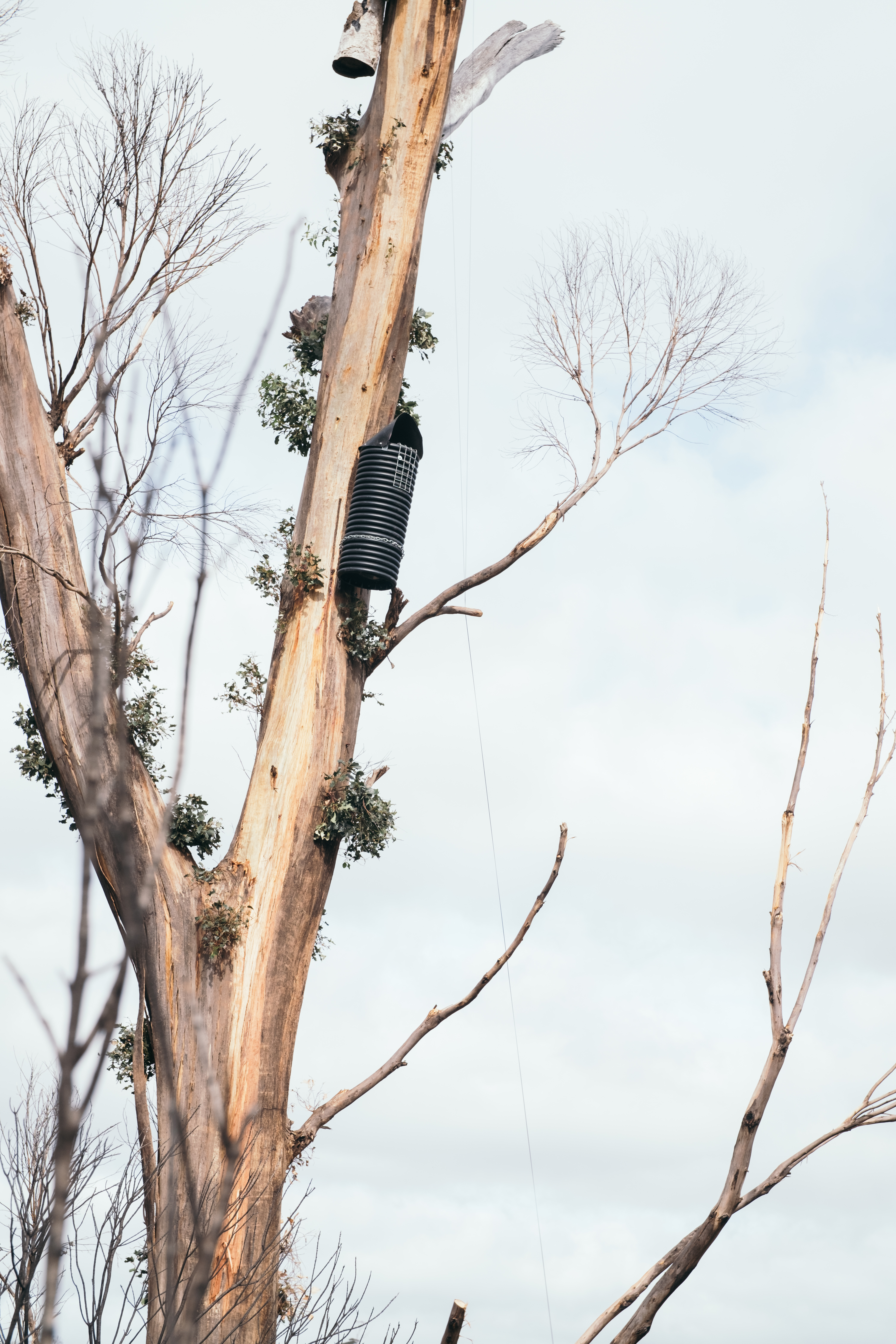There are signs of hope for one of Australia's rarest black cockatoo species.
Kangaroo Island's glossy black cockatoo population lost 54 per cent of its feeding habitat and 35 per cent of all known nests in the largest bushfires in the area's history on January 3 last year.
Natural Resources Kangaroo Island project officer Karleah Berris said there were at least 454 of the endangered birds on the South Australian island, as many survived the fires.
READ MORE: Wet winter ahead sparks bushfire warnings

And thanks to the work of the Glossy Black Cockatoo Recovery Program and its supporters, the population is expected to grow during this year's breeding season.
"They are getting on with life and it does just show how resilient these birds are, which I think is pretty incredible given the devastation of the western half of the island," Ms Berris said.
The population is now more than double the 158 cockatoos in the area in 1995, due to the work of conservationists in the program.
READ MORE: Flock of corellas take over suburban street on NSW South Coast

The endangered population relies on conservation to survive.
The loss of the drooping sheoak feeding habitat is one of the biggest risks, as the endangered cockatoos feed almost exclusively on the tree's seedlings.
Thousands of the trees are planted each year on private properties to increase habitat and provide back-up food sources in the case of fires or droughts.
READ MORE: A woman, five camels and a 5000-kilometre trek across Australia
"We're really hoping over the next 15 years we can make sure there isn't a population decline," Ms Berris said.
"We're being careful with making goals for this species going forward because we all sort of feel like we're still in unknown territory.
"It's just such a big event, and I don't think we've really understood yet how the birds are responding.

"We've got really large flocks clustered up in really tiny bits of habitat in the burnt area. We had 100 birds in quite a small area last year.
"I don't even know if that's sustainable, whether we'll end up getting birds over the years moving to different areas on the island.
"Anything's really possible."
But there is hope for the population.
The program's work is supported by the World Wide Fund for Nature (WWF), Nature Foundation SA and donations from the public.
The partnerships have allowed conservationists to install 19 artificial nest boxes, possum-proof 18 surviving nests, and help 37 nestlings hatch.
The team planted 7100 drooping sheoak trees last year across 12 hectares.
"We know that everything we're doing, although it's hard work and very time-consuming, is making a difference year by year to that population," Ms Berris said.
Source: https://ift.tt/2SHYYxw
Comments
Post a Comment